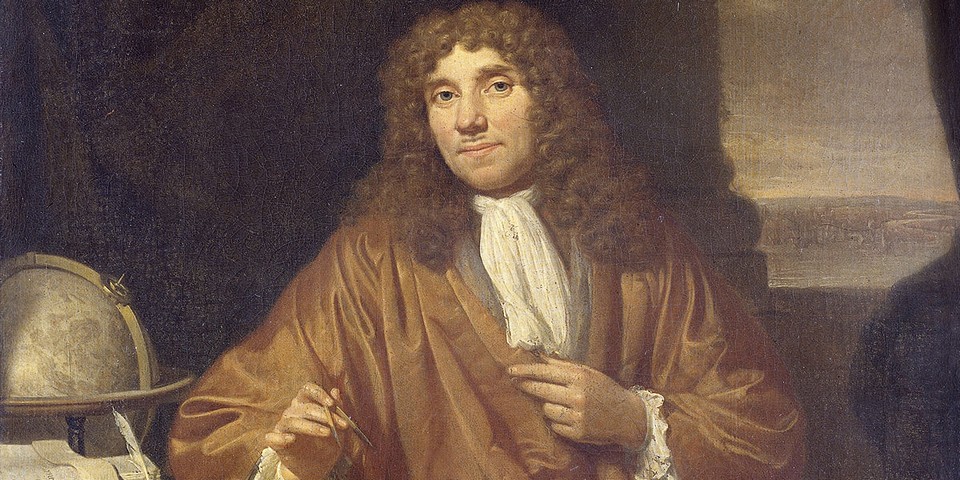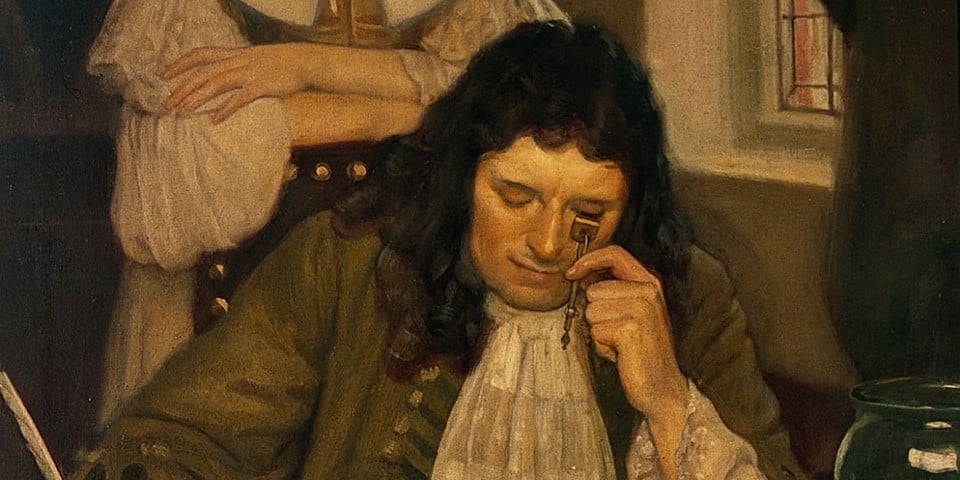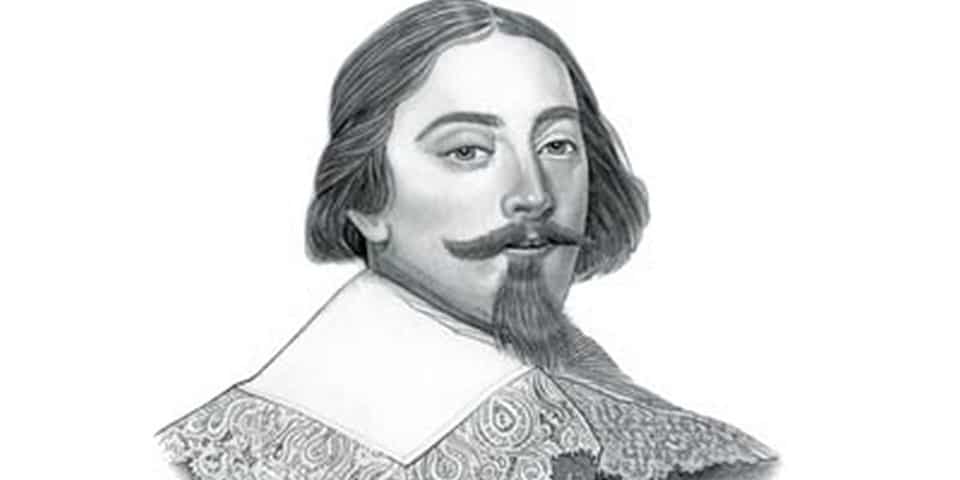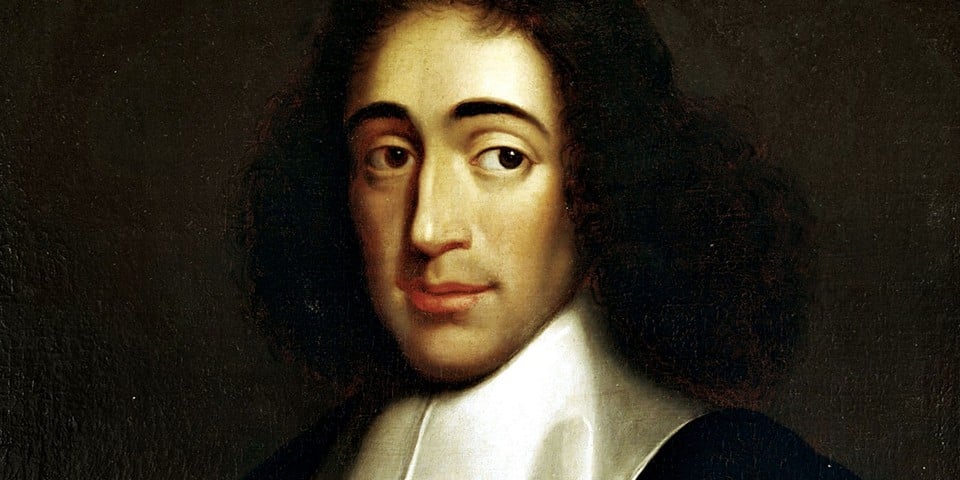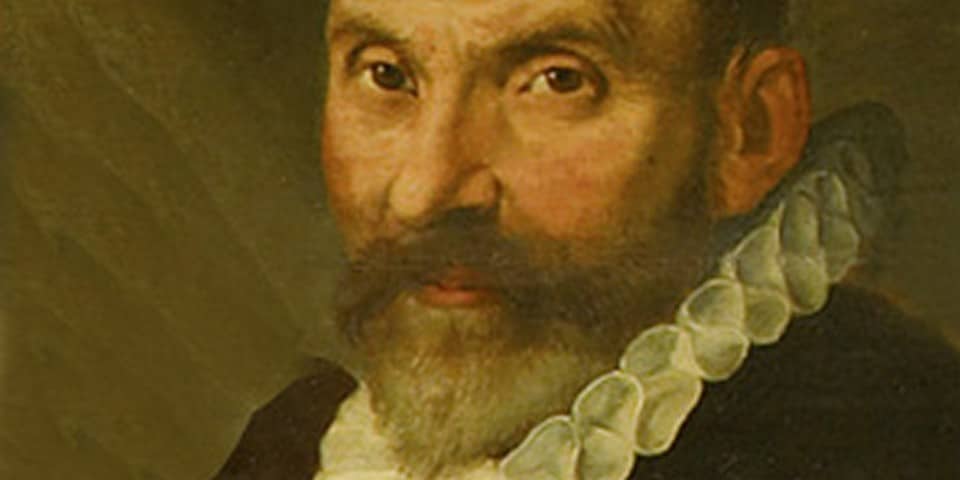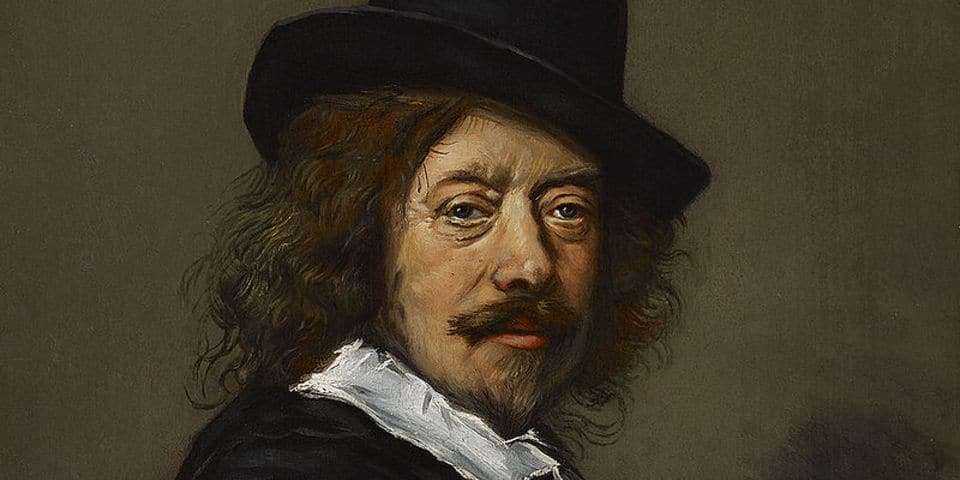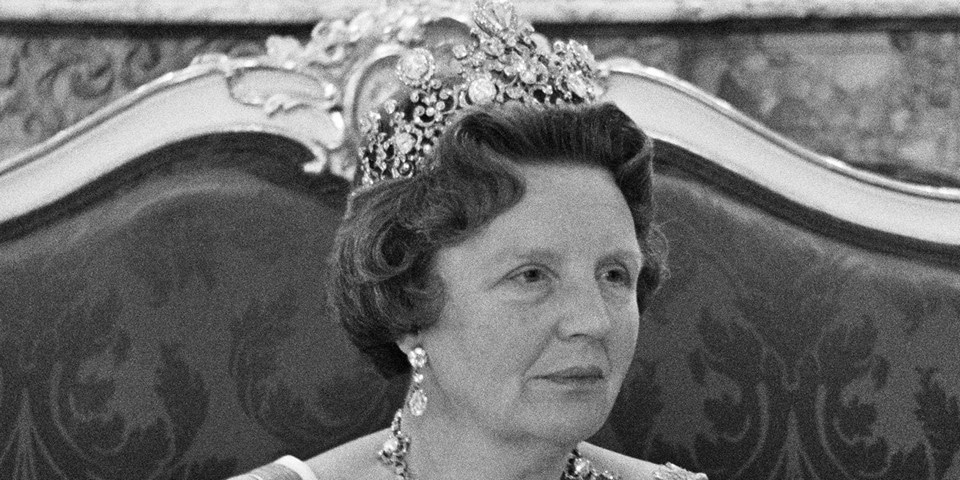Antoni van Leeuwenhoek is a great Dutch biologist, self-taught scientist, inventor of the microscope.
Biography
Leeuwenhoek was born on October 24, 1632 in the city of Delft (Delft) in the poor family of Margaret van den Berch and Philips Thoniszoon, who weaved and sold baskets. Father dreamed of teaching his son the profession of a cloth maker.
At the age of 6, the boy lost his father, and his mother arranged for him to study at a gymnasium, located on the outskirts of the city of Leiden. It is believed that the boy invented the surname for himself: it is formed from the name of the Lion Gate (Leeuwenpoort), which was located not far from his father's house, to which he added a part of hoek ("corner").
Levenguk had an educated uncle who passed on his knowledge of mathematics and physics to his little nephew.
In 1648, without finishing high school, the future scientist went to study the basics of accounting in Amsterdam (Amsterdam). But he did not study, but began to earn money in a haberdashery store. It was there for the first time that he got acquainted with a magnifying glass, which was used by craftsmen for making fabrics. The magnifying glass was fixed with a tripod and became the prototype of Levenguk's future invention.
Since 1654, Leeuwenhoek again lives in Delft, acts as a gatekeeper at the local court, then becomes a shopkeeper. He will live in Delft for the rest of his life. Leeuwenhoek lived for 90 years and died on August 26, 1723.
Family and friends
At the age of 21, Anthony got married, had six children, but they all died in childhood or young age, almost no information remained about them.
After the death of his wife, Anthony was married a second time. But details about Levenguk's family life have not survived. According to the memoirs of contemporaries, the painter Jan Vermeer was a friend of Levenguk. There is an assumption that in the pictures "Astronomer" and "Geographer" Vermeer portrayed his scientist friend.
Inventor
Levenguk has been interested in science since childhood. In 1665 he fell into the hands of the scientific treatise of the Englishman Robert Hooke "Micrographia" (Robert Hooke, "Micrographia"). Since then, he has become interested in studying the phenomena of the surrounding world with the help of a magnifying glass. Particularly interested in his research in the field of zoology, which he conducted together with Marcello Malpighi (Marcello Malpighi).
Levenguk gradually became interested in the manufacture of magnifying glasses, acquired the skills of a grinder and became famous as a skilled craftsman.
Most lenses were small in diameter, no larger than a human eye. According to modern researchers, Leeuwenhoek mastered the art of not only grinding, but also the production of lenses by melting a thin thread of glass and processing a hot spherical glass droplet. Scientists from the University of Novosibirsk in the 70s of the XX century were able to make exactly the same lenses and the same microscope as Levenguk.
The scientist made the finest lenses in frames of copper, silver, gold. They magnified 275 times. This is how the microscope appeared - a construction of several lenses.
Despite the small size of the lenses, Anthony van Leeuwenhoek pioneered many natural phenomena. It is known that scientists have made half a thousand lenses and more than a hundred microscopes. 9 of these unique devices can be seen in modern museums.
Discoverer
The fact that Leeuwenhoek was one of the greatest explorers of his time was written to the London Scientific Society by his compatriot Graaf in 1673. Since then, Leeuwenhoek has become the "scientific correspondent" of the British academicians. Everything that Leeuwenhoek examined under a microscope, he painted, and sent his notes and drawings to the Royal Scientific Society in London. There are more than 300 such notes, and 50 years of the researcher's life were devoted to scientific research. One of Levenguk's letters to English academicians was published in 1673 in the scientific journal Philosophical Transactions.
Levenguk's discoveries were often not believed. This happened in 1676 with his studies of unicellular organisms, when an entire expedition led by Door Nehemia Groeide was sent from England to Holland to double-check the results of Leeuwenhoek's observations. Only in this way the learned world recognized the discoveries of the great Dutchman, and On February 8, 1680, Leeuwenhoek was named a full member of the Royal Society of London, and a few years later - a member of the French Academy of Sciences.
After that, in 1683, significant discoveries were made that became the basis of microbiological science:
- Red blood cells, which are part of the blood;
- Bacteria and microbes, their varieties, etc.
Studies of microbes led the naturalist to the idea that they are divided into several subspecies, they live in rain and drinking water, on the surface of the skin and mucous membranes of a person, but they die when the water is boiled.
Leeuwenhoek conducts scientific experiments and describes microscopic objects:
- Human lens;
- Skin epidermis;
- Sperm;
- Human muscle tissue.
Like many great scientists, Leeuwenhoek carried out some experiments on himself, using his own blood, muscle tissue, and skin particles.
On himself, he studied the dependence of the components of substances secreted by the human body on the composition of food, checked the effect of drugs. Even feeling the approach of death, he described his condition from the point of view of a biological scientist.
His discoveries and conclusions are still considered relevant, for example, the results of studies of the structure of the cell and the cell nucleus.
In addition to research in the field of anatomy and physiology, Leeuwenhoek conducts a study of the natural world:
- Yeast fungus;
- Ciliates;
- Insect eye;
- Reproduction mechanism of hydra, etc.
In addition to biological and medical research, Leeuwenhoek was interested in physical phenomena. For example, he repeatedly, at the risk of his life, observed the process of a powder explosion through a microscope.
Notoriety
During the life of the scientist, his notes were published in 1685, 1718 in the native language of the naturalist and in Latin, a 7-volume edition was published from 1695 to 1722. After the death of Levenguk, an English edition appeared (1798-1801).
The scientist believed in the truth and thus sought to destroy the superstitions of his contemporaries, revealing to them the endless secrets of nature.
Levenguk was a world-renowned scientist: Queen of England and Russian Tsar Peter I, writer Jonathan Swift were proud of their personal acquaintance with Anthony van Leeuwenhoek.
